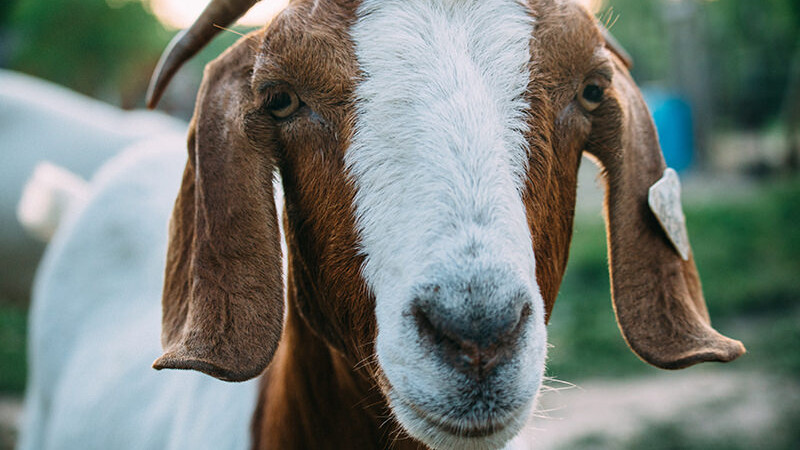

Nutrients are a vital part of a goat’s life and as such, it is up to us to ensure they are getting what they need. One nutrient in particular with which some goats struggle is copper. This is in large part because grain itself does not contain enough copper. Another problem is that hay can be heavy with other minerals that actually can block copper absorption. In a case such as this, you may think you are dosing your goats with ample copper but it is simply being passed through their bodies without benefit, resulting in a deficiency.
Copper deficiency in goats knows no boundaries. It can affect any goat breed, any gender, and strike at any age. The main indicator of such a deficiency is their coat appearance. It will be long and shaggy, course and rough, faded and bleached in appearance. Also a clue is the shape of their tails. If you have a goat with either a bald tail tip or a tail on which hair has split to create the appearance of a fish tail, additional copper is likely necessary.
The fact of the matter is that although you may not always see physical signs, a copper deficiency of some degree is probably present in a lot of goats. There is simply not enough of it available in their natural diet to fulfill their need for copper. Because of this, we have to offer copper as a supplement, but there’s a trick to that, too. For example, copper sulfate is more difficult for the body to absorb than copper chelate, and buying copper chelate exclusively can get pricy. Most people use loose minerals as a solution to the copper deficiency with which they are faced; this is a good way to bring up all sort of nutrient levels but sometimes still is not enough when it comes to getting enough copper into and retained by your goats. If you opt for this method of solving deficiency issues, be sure the loose minerals you are buying are marketed for goats and have no less than 1500 parts per million (ppm, also sometimes written as milligrams per liter or mg/L) of copper.
Since mineral absorption can be tricky at times, another option that is extremely effective for getting goats the copper they need is copper bolusing. This is done by feeding goats a pill capsule that is essentially filled with very small copper rods. Once swallowed, the pill capsule dissolves and the copper rods lodge into the rumen where they deliver a dose of copper on a consistent basis for several months, effectively eliminating the copper deficiency until the rods have broken down and the next dose is due.
In order to use copper boluses, you must first get the dosage right. They are sold in different dosages, so be sure to get one that is intended first of all for goats and second of all for the size of goats in question, such as kids versus adults. The ideal dose is 1 gram of copper for every 9.07kgs the goat weighs, so you may find that buying different doses and mixing and matching is necessary to get to the precise dose.
In order to actually give the copper bolus, you first need to ensure your goats have an empty stomach so the bolus will be retained rather than flushed out with food. When administering, you do not want the goat to chew the copper, so a balling gun is a useful tool during this process. Once the bolus is down the hatch, you should avoid feeding the goat for a few more hours to fully allow it to work its magic; feeding too soon will also flush it out.
In addition to treating a copper deficiency, copper bolusing plays an important role in parasite management. Goats with this deficiency may not have the same ability to fight off parasites as those without it, but adding copper will swing the odds back in their favor. Ultimately there is a lot of good to be gained from the act of copper bolusing, making it a wise choice for any goat herd in need of copper.
 Contact Jaguza Support
Contact Jaguza Support